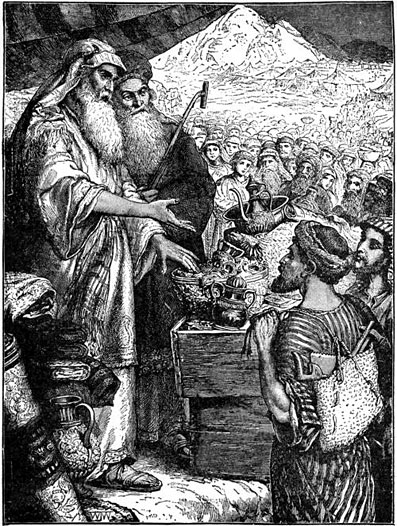Sep
8
2009
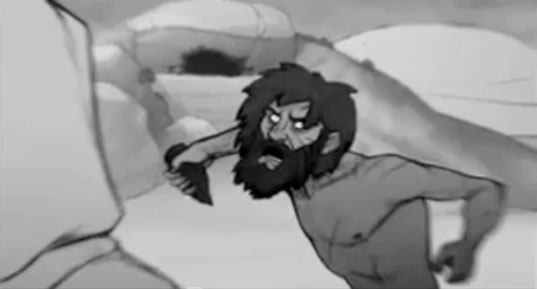
Matthew 1-10 follows the Dominion pattern. After Jesus’ testing in the wilderness, in 4:18-8:13 Jesus called His disciples and began mustering a new holy army – the “next generation”.[1] It was reported to Him that the last Old Covenant Nazirite (holy warrior) was dead. It was time for new warriors. Jesus healed the uncleanness of many, creating a new priesthood. His success in the wilderness as a new Head made possible this new body. Peter Leithart writes:
Continue reading
Comments Off | tags: Atonement, Bible Matrix, Demons, Dominion, High Priest, John the Baptist, Leviticus, Nazirite, Peter Leithart, Totus Christus | posted in Biblical Theology, Totus Christus
Sep
3
2009

This beautiful gem from Paul Huxley (reposted here with his permission):
A man finds some treasure in a field, he covers it up, joyfully buys the field and gets the treasure. Does that sound familiar? That’s right. It’s the plot of the book Ruth.
Continue reading
Comments Off | tags: Bible Matrix, Boaz, Matthew, Parables, Paul Huxley, Ruth, Systematic typology, Totus Christus, Trinity, Typology | posted in Biblical Theology
Aug
27
2009
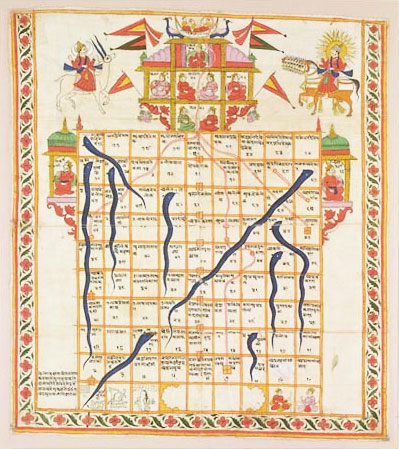
“…when the blood goes up, the Spirit comes down.”
The battle between the Son and the serpent rages throughout the Old Testament. Every time the Lord renews the Covenant, Satan is ready with a counterfeit. God uses the phonies to test and purify His people, wipes the failures off the slate, then starts again.
Aaron and Jeroboam set up patently false worship in their golden calves. But false worship in the guise of true was much more difficult to discern, especially when it usurped the exact location of the true. When the Lord took Ezekiel to the Temple as a legal witness, it was a whitewashed tomb. He dug through the wall and discovered that it was a house of hypocrisy, the synagogue of Satan. All that remained of Israel’s witness to the nations was a thin veneer.
Continue reading
Comments Off | tags: David, Ezekiel, Herod, Incense Altar, Jacob, Satan, Saul, Tabernacle, Temple, Totus Christus, Wormwood | posted in Biblical Theology, The Last Days
Aug
14
2009
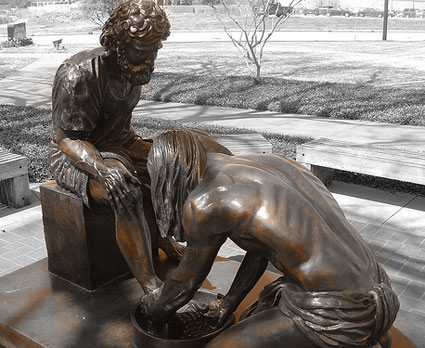
or Filling Up That Which is Lacking
After reading about the Bible’s use of robes as symbols of office (see The Dominion Trap by James B. Jordan), Tim Mitchell commented:
In Bible study we’ve been looking at John, so a few weeks ago was John 13. My Bible translated v.4-5 as “So he got up from the table, took off his robe, wrapped a towel around his waist, and poured water into a basin. Then he began to wash the disciples’ feel, drying them with the towel he had around him.”
So that recalled for me the couple of pages on robe imagery, and it seems to foreshadow what Jesus will do later on very well: He is willing to take off his authority and righteousness, and take on the dirt of our sin.
But then I got a bit unsure, since Jesus then goes on to say “you ought to wash each others’ feet” in v.14 and “Do as I have done to you” in v.15. So if the symbolism applies, how are we also supposed to take other peoples’ sin on us as Jesus did?
Firstly, what a great question. Many New Testament passages become so familiar that we often lose the ability to really think about their ramifications.
The structure of the Last Supper puts this action of Jesus at Atonement, the Laver (Day 6). Jesus is liturgically pre-enacting His role as High Priest. The Adam removed his glorious robes and wore linen for the Day of Covering. Jesus left this in the tomb with our sin on it. But that is not all the High Priest did. He approached the Most Holy twice.
Continue reading
Comments Off | tags: AD70, Against Hyperpreterism, Ahasuerus, Atonement, Daniel, Esther, Hebrews, High Priest, Holy Place, Joseph, Last Supper, Liturgy, Totus Christus | posted in Biblical Theology, Christian Life, Totus Christus
Jul
4
2009
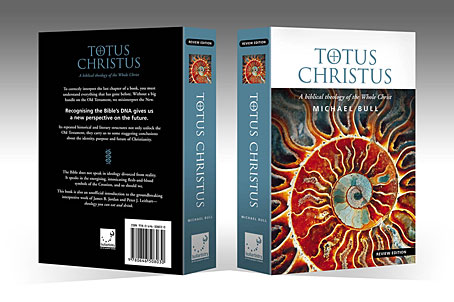
Some encouraging comments on the review edition of my book, just to balance things up a bit! Kelby in the U.S. blogged:
Very recently I was privileged enough to receive an electronic copy of a book penned by Australian graphic designer and theologian Mike Bull. It has been quite a harrowing experience. I’m not even a quarter of the way through the 800-page tome, and I’m already overwhelmed by all the things Bull expects me to internalize. This definitely isn’t armchair theology, folks.
The book in question is titled Totus Christus: A Biblical Theology of the Whole Christ. One of its foundational assertions is that there is a fundamental pattern laid out through the entire Bible–a pattern which his book is modeled on. This pattern is woven throughout all of Scripture, and can help us to understand Biblical structure and idioms…
Continue reading
Comments Off | tags: Literary Structure, Totus Christus | posted in Totus Christus
Jul
3
2009
“Be meticulous to present yourself for the praise of God as an unashamed workman, cutting the word of truth in a straight line.” (II Timothy 2:15)
Is this verse simply teaching that if we “divide up” the Scriptures correctly, we’ll get an AWANA[1] merit badge from God? Hardly. It is flanked by condemnations of those who fight over the Scriptures to no profit, and those whose vain babblings are gangrenous.
Paul speaks of a soldier and a farmer, and then a productive workman. Paul is concerned about building saints and churches, and they are built by a straight and true cutting of the word. Like most of Paul’s statements, there is a very long, fully-loaded freight train of Old Testament history and typology right behind it, and it’s coming right at you, right now.
Continue reading
Comments Off | tags: Darius, David, Esther, Ezekiel's Temple, Nebuchadnezzar, New Jerusalem, oikoumene, Peter, Peter Leithart, Postmillennialism, Revelation, Solomon, Stigmata, Temple, Totus Christus, Worship | posted in Biblical Theology, Christian Life, The Last Days, The Restoration Era
May
26
2009
[This has been posted previously but it makes sense to include it under this banner. In fact, the article itself might now make more sense!]
Gold, Onyx and Bdellium
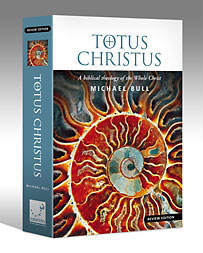
(The Tabernacle imagery is as much fun as it is grand and terrifying. I was thinking about rainbow striped onyx. In “Behind the Scenes”, James Jordan wrote:)
“These glorious gems represent the sons matured into tribes. A baby has not yet matured into anything specific. We don’t know if a child will become a good person or a bad one. We don’t know if he will be a musician or a minister or a farmer or a sailor or a computer engineer. As we grow, we grow from being “striped onyx” into a specific glory, which each of us has unique to himself. Thus, as the twelve sons of Jacob matured into tribes, each tribe took on a distinct glory of its own, represented by its gemstone.” Continue reading
Comments Off | tags: High Priest, James Jordan, Revelation, Totus Christus, Worship as commerce | posted in Biblical Theology, Totus Christus
Apr
24
2009
“If Satan was defeated at the cross, why was there so much Satanic activity before the destruction of the Temple?”
Christ was lifted up as head and by the Spirit the church became His Jew-Gentile body.
Christ’s death defeated the head (Satan) but Satan raised up a false Jew-Gentile body (Judaisers and Rome).* It was the deaths of the apostles and martyrs that brought about the defeat of this ‘body’ in AD70.
Now Christ and the church as a single body stand on the head of the serpent so he cannot cause all nations to conspire as a single body – until he is released for a short time to fill up his sins and bring about his destruction.
(*Satan was thrown out of the heavenly Temple but moved into the earthly one – seven worse demons – a false Lampstand. Judaism’s seven eyes were darkened. [Matt. 6:23])
Comments Off | tags: Judaisers, Lampstand, Satan, Temple, Totus Christus, Totus Diabolus | posted in Biblical Theology, The Last Days
Apr
23
2009
“And the God of peace will crush Satan under your feet shortly.” Romans 16:20
James Jordan commented in one of his lectures that some churches had a serpent painted on the floor in the doorway. The saints trod him under foot as they entered God’s house to worship.
Continue reading
Comments Off | tags: Against Hyperpreterism, High Priest, James Jordan, Jericho, Joshua, Satan, Totus Christus | posted in Against Hyperpreterism, Biblical Theology, Totus Christus
Apr
19
2009
or The Feasts are the Key to the Revelation
All Christians recognise Christ’s fulfilment of Passover (crucifixion) and Firstfruits (ascension), followed by Pentecost. Futurists, who major on all things Jewish, recognise that Trumpets and Atonement follow, but they push them into the future.
Continue reading
Comments Off | tags: Acts, AD70, Against Hyperpreterism, Atonement, Dispensationalism, Herod, Holy war, Jezebel, Passover, Totus Christus, Trumpets | posted in Against Hyperpreterism, Biblical Theology, The Last Days






